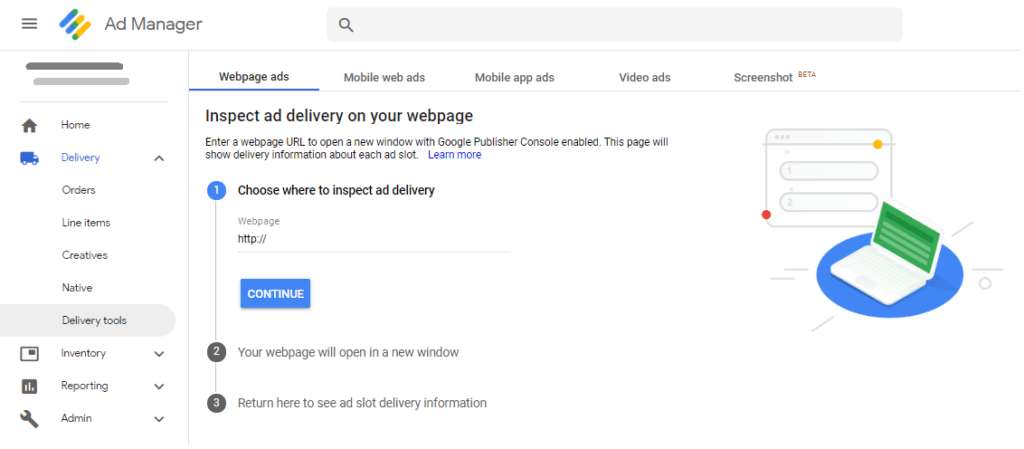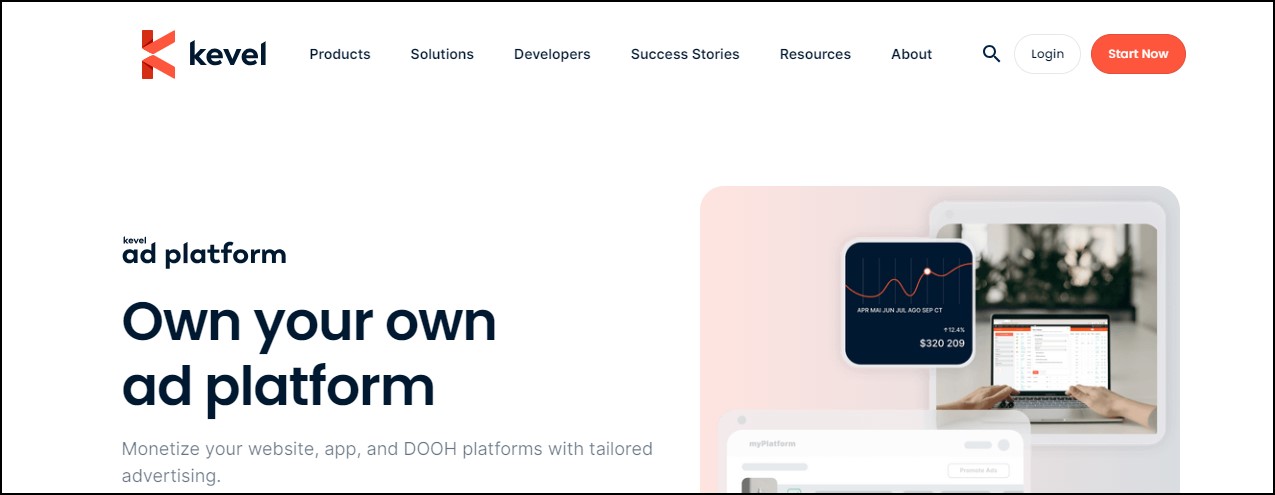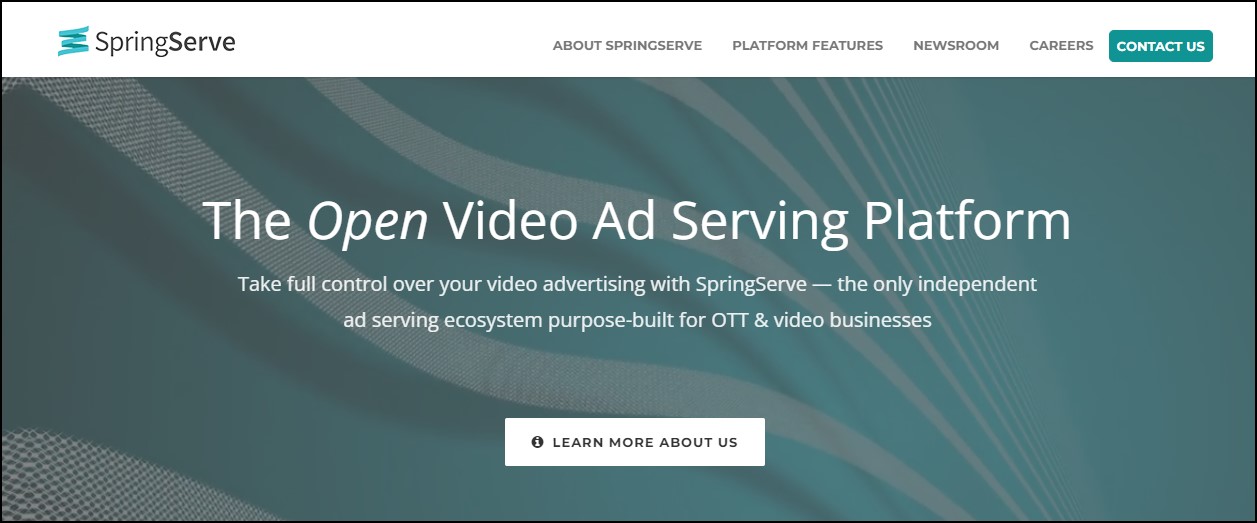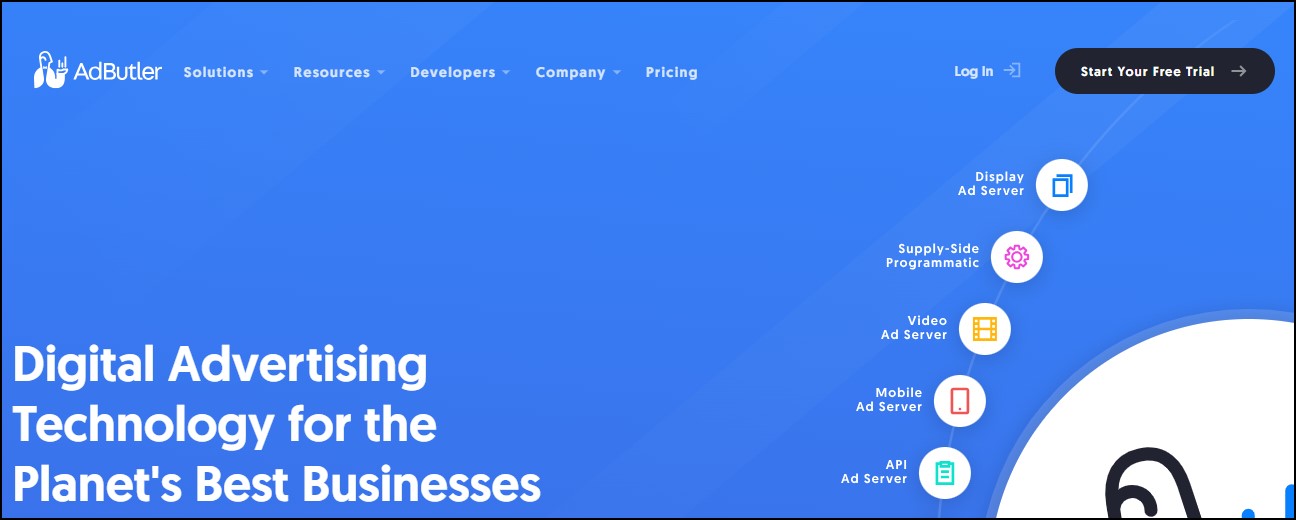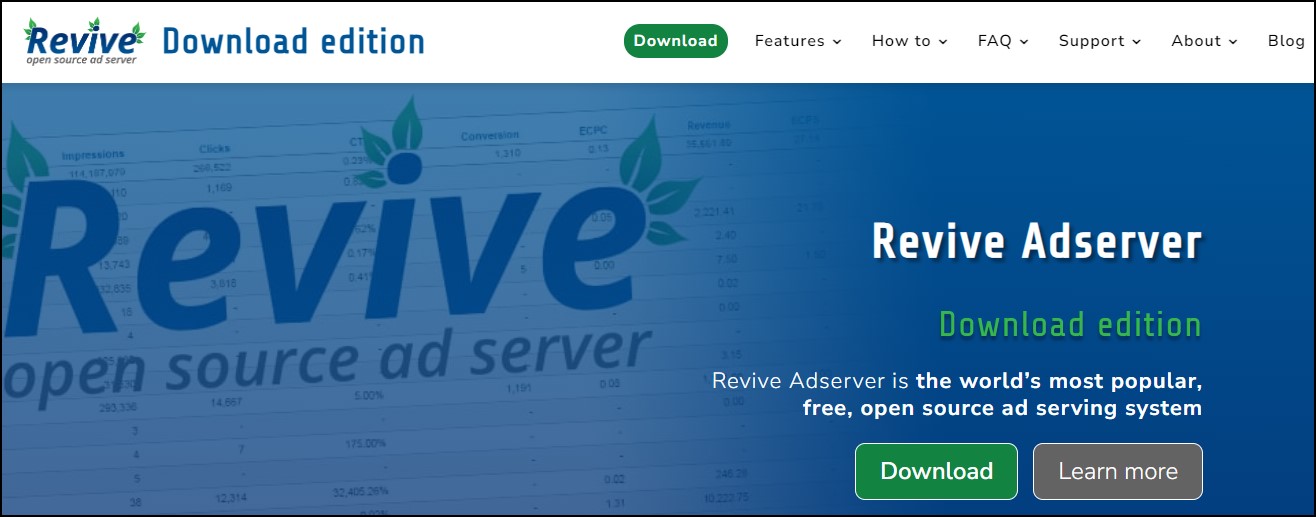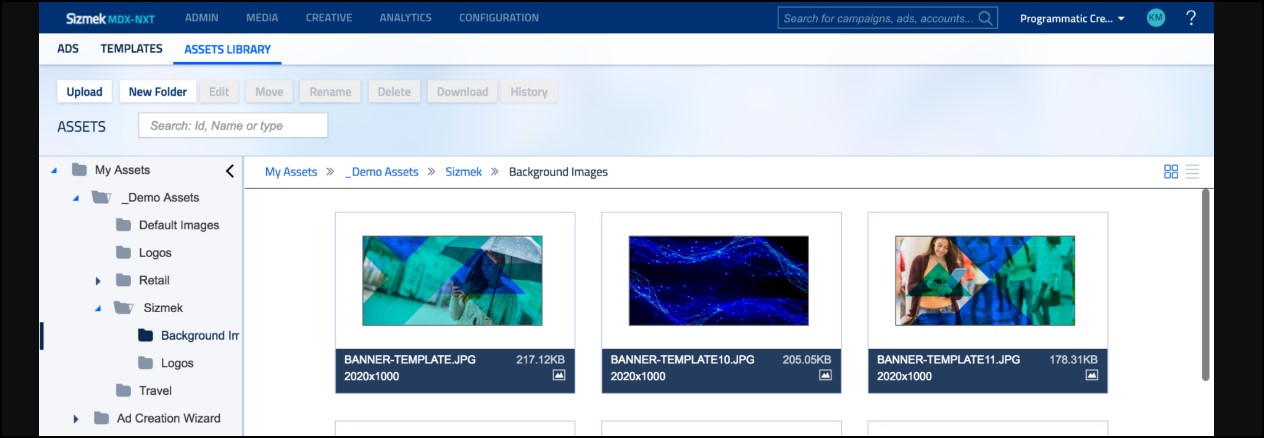FTC disclaimer: This post contains affiliate links and I will be compensated if you make a purchase after clicking on my link.
In today’s digital world, online advertising has become an integral part of marketing strategies for businesses of all sizes. Advertisers need to track and analyze their ad campaigns’ performance constantly, which is where ad server software comes into play.
An ad server is a tool that helps advertisers manage, serve, and measure ads on multiple websites or platforms.
Ad server software provides a one-stop solution to control every aspect of online advertising campaigns.
From creating ad placements to targeting the right audience and tracking conversions, an ad server streamlines the entire process for advertisers.
In this article, we will dive deeper into what ad server software entails and explore its benefits for advertisers looking to maximize their return on investment (ROI) from online advertising campaigns.
What Is an Ad Server?
Ad servers are essential components of modern digital advertising. They serve as web servers that store, deliver, and manage advertising content on various digital platforms. AdTech companies offer these services to advertisers, publishers, ad networks, and ad agencies in order to create powerful and efficient online marketing campaigns.
These ads are chosen based on several criteria such as demographics or search query to ensure the best performance possible for their target audience. This process is automated by the ad server which makes quick decisions about the types of ads displayed on a site and serves them accordingly.
Furthermore, data such as clicks and impressions are collected by these servers which provide valuable insights for both advertisers and publishers so they can assess performance and adjust their strategies accordingly.
Ultimately, ad servers ensure that ads reaching users are relevant to their interests for maximum impact.
Types of Ad Servers: First-Party Ad Server vs. Third-Party Ad Server
First Party Ad Servers
First-party ad servers are those that a publisher hosts and manages for their own use. This type of ad server is typically used for publishers who wish to manage and track their own ad campaigns.
With first-party ad servers, the publisher can easily monitor performance by tracking data such as clicks, impressions, location of ads, average CPC or CPM rates, etc. They can also adjust their campaigns in real time based on the performance metrics they review.
Third-Party Ad Servers
Third-party ad servers are those owned and operated by external services such as digital networks or SSPs (supply-side platforms).
Publishers can choose these services to manage their revenues from ads since they provide access to more buyers at higher prices than publishers’ sites usually receive.
Third-party ad servers are often used when a publisher does not have enough traffic to effectively sell its inventory or when it wants to find different ways to monetize its inventory more efficiently.
In addition, these third-party ad servers help advertisers and publishers scale up quickly by offering various targeting methods such as demographic targeting, behavioral targeting, retargeting, etc.
Best Ad Server Software
Google for Publishers
Google for Publishers is a great resource to help you earn money from your creative craft. It provides tools to help you reach the right audience as well as make the most out of your content and ads.
With AdSense, you can easily monetize your site or blog and generate some earnings with simple, targeted ads. All you need to do is place these ads next to relevant content on your page and Google will take care of the rest.
Furthermore, AdSense automatically resizes ad units depending on device size, which helps increase revenue potential since more people will be able to view them in the best format possible.
Google for Publishers is ideal for those who have just started their own business or are currently trying to grow their earnings.
Instead of spending precious time doing tedious coding work, let Google do it for you so that all you have left to focus on is creating excellent content that captivates readers and keeps them coming back for more.
Turn passion into profit and have fun while doing it—Google gives us all an opportunity for this!
Kevel
Kevel is a custom ad platform that offers businesses the core infrastructure for ad serving, reporting, and targeting.
With its API, entrepreneurs are able to build tailored solutions that generate high revenues through sponsored listings, native ads, retail media content, digital out-of-home ads display on their website as well as email ad-serving capabilities.
Kevel significantly improves user experience while addressing enterprise-level security issues. Its front-end response time is an impressive average of 28 ms; saving precious milliseconds.
The platform’s flexible architecture permits easy integration with no JavaScript tags or cookies required. Furthermore, companies can automate manual processes to save time and money with the instantaneous scalability characteristic of a SaaS-based pricing model.
This makes Kevel perfect for launching a minimum viable product (MVP) without hiring engineers and bettering user experience in the face of increasing ad blockers.
OpenX
OpenX is designed for publishers who want to tap into a global market of businesses and increase their growth opportunities.
Publishers are able to work with identity-based activation partners, create custom SPO arrangements, and be certified as an SSP status.
OpenX also creates package deals on behalf of buyers which helps to generate more results for both the buyer and publisher.
OpenX provides its users with an advanced identity graph that unifies and resolves user data from different third-party identifiers in order to get a better understanding of their target audience.
This comprehensive understanding allows them better results in terms of ad campaigns, audience profiling, and adapting offers as per customer preferences.
What’s more, the platform’s reporting system can help publishers by providing easily digestible insights into marketing performance that can be used in action or strategizing future marketing campaigns to ensure long-term success.
Broadstreet
Broadstreet is an excellent ad manager for digital and direct ad sales, offering several features that help publishers optimize their performance.
They boast a comprehensive spec ad library, secure ad serving, fast ad serving, automated reporting, newsletter advertising, and sponsored content analytics – all working together to ensure publishers have maximum accessibility to potential clients.
With Broadstreet, you can rest assured knowing that you’re being supported side-by-side by the company’s knowledgeable tech which helps with platform setup and sales advice.
Moreover, their plug-and-play formats only take minutes to build and send as specs which will allow you to increase your margin with decreased design costs due to high click-through rates.
All in all, Broadstreet is an excellent choice for media companies looking for an industry-leading solution for managing their digital and direct ad sales.
SpringServe
SpringServe is an independent ad-serving platform built for video businesses and OTT, providing comprehensive control and insights to optimize media strategies.
With its advanced features like the precise routing of ad inventories, publishers have the ability to buy and sell ads via both open and proprietary marketplaces.
SpringServe also offers A/B testing along with key integrations for CTV/OTT environments, giving publishers more confidence in their video performance.
In terms of security, SpringServe ensures a safe ecosystem by actively monitoring campaigns in real-time especially when embedded in other networks or platforms.
Additionally, it provides users with actionable insights to track performance analytics such as revenue management, fraud detection, and inventory optimization which enables them to gain a competitive edge in the digital advertising marketplace.
With its support for key marketplaces, streamlined setup process, and powerful intervention measures, SpringServe is not only ideal for introducing new tactics but also for managing existing ones to ensure maximum ROI from your ad investment.
AdButler
AdButler is an all-in-one solution for companies looking to power digital advertising operations.
It offers everything from full-stack ad-serving solutions to dedicated engineers, and human support in one platform.
AdButler utilizes APIs and software to help businesses manage ads on any device while also being able to save time and reduce costs.
With its suite of products, AdButler can handle applications, retailers, connected TV, email newsletters, websites, and more.
Additionally, they have specialized services like video advertisement management, self-serve marketplaces, digital out-of-home advertising, mobile optimizations, and custom developments.
All of these features allow for a wide array of options when setting up digital advertisements that can be tailored to each business’s specific needs.
This makes AdButler the perfect choice for businesses of any size to easily monitor campaigns and maximize revenue without complicated coding or setup procedures.
Revive Adserver
Revive Adserver is an open-source, free ad-serving platform that allows users to manage and serve ads on different platforms. This platform offers advertisers, ad networks, and publishers the ability to monitor clicks, conversions, and impressions.
Revive Adserver’s user-friendly interface enables administrators to create multiple campaigns for various advertisers from different ad networks with ease.
Through the use of delivery rules such as URL targeting, frequency capping, and geo-targeting; you are able to customize how your advertisements are received by potential customers.
Additionally, Revive Adserver provides extensive performance tracking which includes data such as the revenue generated along with details on both conversion rates and CTRs (Click Through Rate).
Lastly, the ability to upload or input banners for each created campaign gives marketers greater control in personalizing their promotions in order to reach out to target audiences more efficiently.
Overall, Revive Adserver is a great resource should any business be wanting to try their hands at digital advertising without having to invest too much initially.
Sizmek
Sizmek is a powerful tool for professional marketers to create and deliver digital advertising more effectively.
The platform offers a full suite of features including comprehensive creative control, comprehensive targeting and analytic capabilities as well as online audience targeting and optimization solutions.
With over 15 years of experience in the digital space, Sizmek is the largest third-party ad server on the market, allowing users to deliver video ads and multi-channel campaigns with maximum efficiency.
The real power of Sizmek comes from its intuitive system that helps users optimize messaging across a wide range of channels to ensure maximum engagement.
From pixel tracking to real-time reporting and analytics, Sizmek gives decision-makers direct access to time-sensitive insights that indicate what audiences are most likely to take action based on their creativity investments.
The platform also allows multiple users to collaborate on campaigns efficiently while enjoying top-notch 24/7 technical support when needed.
Epom
Epom provides a white-label ad server solution that gives businesses the chance to customize their own branded ad serving system.
From email alerts to the user interface, everything can be tailored according to the individual brand’s needs and wishes. This helps reduce R&D costs and also allows companies to focus more on promotion and marketing.
Similarly, with Epom it’s easy to continually upgrade and add new features as necessary over time with its advanced ad-serving features.
Epom is designed for businesses of all shapes, sizes, and budgets as well as for start-ups looking to be the pioneers in a competitive market.
That said, its streamlined solution allows customers to set up an entire network in minutes; allowing them to use its integrated reporting tools and extensive media library data easily and quickly – thus making it easier for people wanting more information about their campaigns or outreach efforts.
All this makes it much easier for agencies or private companies resembling them, ensuring they can serve ads efficiently across multiple platforms with minimal fuss.
Ultimately, allowing businesses no matter how established or nascent they may be from taking control of their Ad Serving Solutions very quickly.
OIO Publisher
OIO Publisher is a versatile ad management script that takes the hassle out of running an advertising program.
It allows even those with minimal technical knowledge to easily manage their online ads, giving access to a wide range of features and flexibility.
With functions to add, edit and delete campaigns, banners, and payment options, it’s easy to customize an ad-serving program for any website.
Plus, its relatively inexpensive cost of just $47 makes it great value for money for small publishers looking for a reliable solution.
This flexible service can be installed as either a WordPress plugin or as a standalone program. As such, it works well with most web hosting services – allowing greater control over the management of ads across the users’ sites.
With rapid loading times and support for popular ad networks like Google Adsense, Facebook Ads and Amazon Associates – OIO Publisher is one of the leading advertising solutions around today.
Ready-made templates also make it easy to quickly create impressive ads that engage your audience and boost click-through rates.
iBILLBOARD
iBILLBOARD is a comprehensive solution created specifically for publishers to give them everything they need to run and manage their campaigns.
The platform provides advertisers with all the necessary tools to manage their inventory and sales, allowing them to have complete control over their campaigns. Advertisers can make use of different types of advertising formats, including mobile, video, and desktop ads.
Through the invoicing system provided within iBILLBOARD, publishers can easily track their revenue and any goals associated with it. In addition, the platform also offers powerful reporting capabilities that allow users to quickly identify any discrepancies or weak points in their campaigns.
The integrated video player allows you to seamlessly display high-quality advertisements without errors or delay.
It uses a video ad server that instantly responds and communicates all changes to ensure peak performance of the ads being displayed on web or mobile device players.
With various options in place for automation, direct marketing teams can take full advantage of iBILLBOARD’s user-friendly interface, making sure they are achieving maximum results with minimal effort.
Overall, iBILLBOARD is an immensely useful platform for streamlining your advertisement initiatives with advanced metrics and analytics in one single place.
What Is the Difference Between Ad Servers and Ad Exchanges?
Ad servers and ad exchanges are both pieces of technology used to facilitate digital advertising, yet they serve different roles.
An ad server is a piece of software that manages the storage, targeting, scheduling, and delivery of an advertisement on a webpage or within an application.
It allows advertisers to organize detailed information on campaigns, enables publishers to deliver ads directly to their audiences, and helps both parties gather data from viewings.
In contrast, an ad exchange is a platform where publishers and advertisers can buy and sell advertisement space programmatically.
It combines real-time bidding with the latest technology to reduce manual processes in ad buying. This makes it easier for both parties to create cost-effective campaigns through automated transactions with optimized results.
The two technologies go hand in glove—an ad server streamlines the sales process for publishers by delivering advertisements while the ad exchange provides a convenient marketplace for trading them.
Advertisers gain access to more targeted audiences at low costs and publishers have increased competition pushing up the prices as buyers compete on bids in smaller increments that match their budget.
Together, these two technologies provide more control over who sees an advertisement online without long-term contracts between publisher and advertiser while offering greater transparency into online media buying activities.
Hosted vs. Self-Hosted Ad Servers
Hosted Ad Servers
Hosted ad servers provide a great solution for businesses who want to take advantage of the latest advertising technology and related features but don’t have the technical skills or resources required for a self-hosted setup.
By outsourcing setup, maintenance, and updates to an experienced provider, businesses can benefit from reliable and optimized service with fast response times.
Hosted ad servers usually come with quality support so you can address any issues that may arise.
Of course, this convenience comes at a price so you need to consider whether the benefits outweigh the additional costs.
Self-hosted Ad Servers
In contrast, self-hosting requires significant technical know-how as you are responsible for installation, maintenance, and update processes yourself.
While this approach typically offers greater control over software as well as more cost savings than paying for hosting services, it also takes time and skill – both of which might be in short supply if your team is already stretched thin in covering other development tasks.
Self-hosting is a viable solution but requires careful evaluation to assess whether it’s right for you given other factors such as time available and responsibility within the team structure.
Key Features and Advantages of Ad Servers
Ad servers have become essential for many website owners because of the numerous advantages they hold when it comes to ad delivery, campaign management, and targeting.
With an ad server, you can easily create targeted campaigns that can cater to your visitors’ needs more accurately.
Target Audiences
Targeting is one of the key benefits of using an ad server. You can target specific audiences and categories through the use of first-party ad servers in order to serve up ads that have the greatest impact on them.
This helps publishers to provide ads from a wide range of advertisers that would give their visitors what they’re looking for with little effort from their content and marketing teams.
Deliver Relevant Ads
You can deliver relevant ads directly to your readers based on their interests, locations, and other criteria that best fit them so they remain interested in whatever you’re offering them.
Manage Digital Marketing Campaigns
You can also use the first-party ad server to manage all your digital marketing campaigns easily and efficiently – ensuring everything runs as planned without any glitches along the way.
Campaigns created through an ad server are capable of evaluating success metrics such as clicks, conversion rates, impressions (likes and comments), cost, etc., giving you detailed insights on which areas need improvement and how much budget needs
Why Do You Need an Ad Server?
In the early days of digital advertising, the process was very basic and rudimentary involving a direct interaction between publisher and advertiser. This type of personalized engagement didn’t scale well as online content began to grow exponentially.
In order to streamline the process, publishers began to create ad servers that offered a more efficient way of managing campaigns.
Ad servers enabled publishers to automate many of the mundane tasks associated with serving ads, such as designing and testing creatives, setting start and end dates for campaigns, tracking usage/impressions, etc.
Ad servers also enabled analytics capabilities to help advertisers measure performance.
They do this by pinpointing exactly which campaigns are performing through collecting data from multiple sources including platform integrations (like Google Display Network), Adobe Analytics, AdWords Search Ads, or from SEO/SEM marketing efforts.
Ad servers provide transparency to both the advertiser and the publisher as they generate real-time reports regarding performance metrics such as impressions served or cost per click (CPC). The ad server then automatically optimizes for better results in terms of targeted reach or higher ROI.
Conclusion
In conclusion, ad servers can be an excellent tool for advertisers as they provide flexibility to manage different types of advertisements and deliver them to the target customer segment.
With a hosted ad server, businesses can easily improve campaigns by displaying ads that are relevant to their desired audience and optimizing campaigns. This in turn helps them get maximum exposure and reach the highest conversion rate possible from the website.
Furthermore, there are great ad networks designed specifically for bloggers where they can find and book campaigns conveniently.
All things considered, looking into how an ad server can benefit your business is definitely worth it if you want to maximize your returns from online advertisements.
With a sound overall strategy in place including both targeted campaigns and effective optimization techniques through using an ad server, you should be able to experience great results in no time at all.
